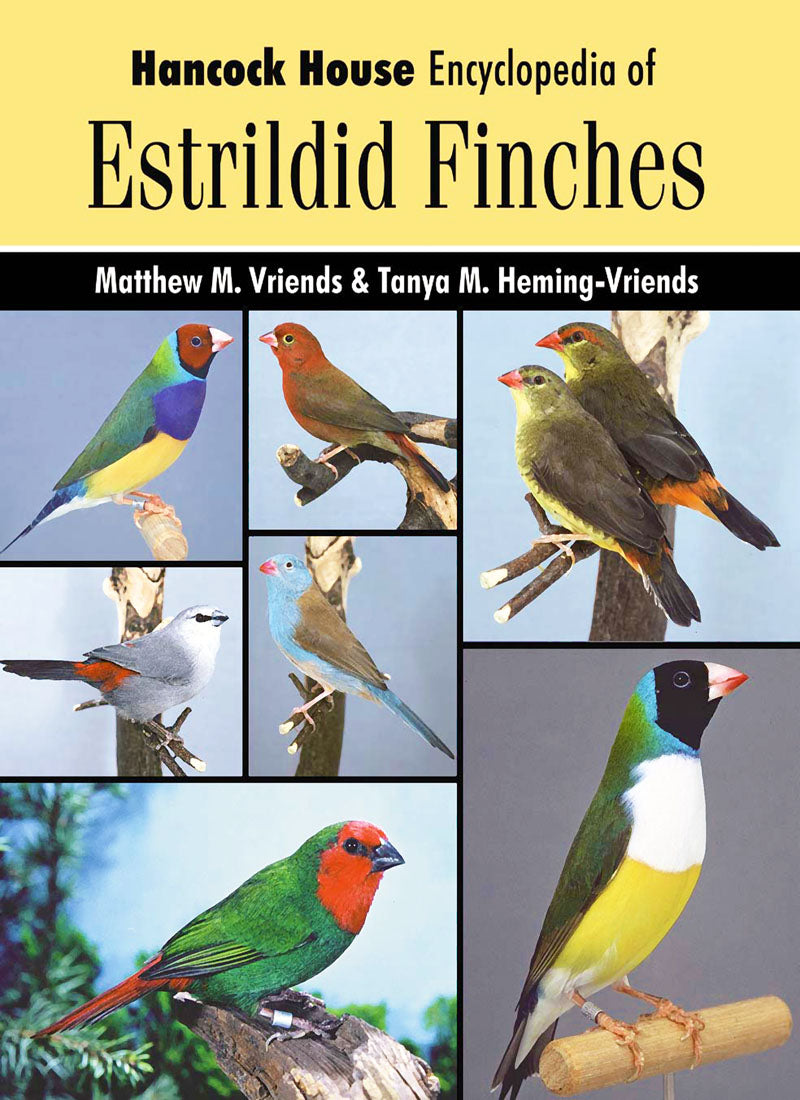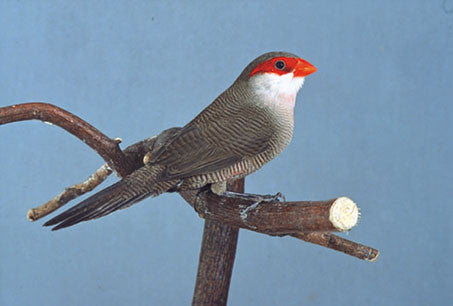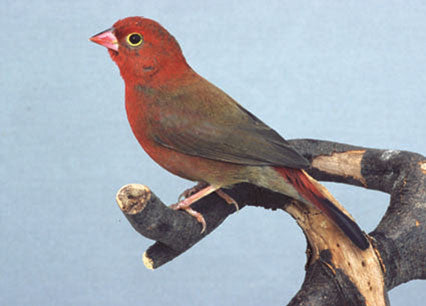




Estrildid Finches: The Hancock House Encyclopedia of
Details
By: Vriends, Matthew, Heming-Vriends, Tanya
ISBN: 978-0-88839-493-4
Binding: Trade Cloth
Size: 11" X 8.5"
Pages: 256
Photos: 349
Illustrations: 70
Publication Date: 2002
Description
PR Highlights: A Complete Encyclopedia of Estrildid Finches.
PHOTO Highlights: 48 Page Color Photo Section.
Description: This book compiles the essential guidance you need to achieve success in finch culture, and holds the answers to questions both scientific and practical questions about this family of Finches. Every day more people discover the pleasure of keeping finches. Whether your plans simply call for a few birds in an attractive cage to brighten your home, a fully furnished aviary or something in between, this is a hobby that offers great satisfaction for everyone who enjoys being in close touch with Nature. In this book, you will find detailed descriptions of some of the most colorful and popular cage and aviary birds from the tropics and subtropics: Waxbills, Mannikins, Munias, Grass and Parrot Finches, together forming the Family of Estrildid Finches or Estrildines (Estrildedae). This book will give you all the essential guidance you need to achieve success in finch culture. Estrildid Finches holds the answers to questions both scientific and practical to pursue the hobby as deeply as you wish, as well as a bounty of insight on the natural history of this species.
Author Biography
Matthew Vriends is a professional biologist and ornithologist. From 1984 to 1993 he was Director of Research and Education for L/M Animal Farms in Ohio where he developed
approximately 40 varieties of commercial bird food. Since 1998, he has been a professor of biology and ornithology at Suffolk Community College in Selden, New York. Vriends has a Ph.D. in zoology and biology from the State University of Utrecht in the Netherlands and a Ph.D. in virology and bacteriology from Thomas More College. He has published over 100 bird- and other animal-related books in English, Dutch and German. Some of his latest titles include Conures, Doves and Hand-feeding and Raising Baby Birds. He writes for many English and Belgian periodicals including BirdTalk, Watchbird, Onze Vogels and Vogelvreugd. Matthew Vriends has kept finches since the 1950s and has been researching them since the early 1960s. He enjoys sharing his knowledge and experience with these fascinating birds that are a pleasure to keep and study. He has often been interviewed on television as an expert in aviculture and had his own weekly radio show in Holland.
Tanya Heming-Vriends is the third generation of her family to pursue an interest in biology and aviculture. She has a M.Sc. in biology and marine biology from the State University of Utrecht in the Netherlands and is presently a Ph.D. candidate in marine biology at Ohio State University. She has traveled throughout the world to regions such as Australia, South America, the Congo and Indonesia assisting her father with research and field observations of finches. Tanya Heming-Vriends has participated in the publication of
books and periodical articles as writer, illustrator and researcher. She has co-authored The Canary Handbook, Hedgehogs and A Complete Pet Owner’s Manual and written finch-related articles for Watchbird.
Book Reviews
By Laszlo Wagner - Published on Amazon.com
This book is the only complete overview of estrildid finches from an avicultural point of view. It does list and describe all known species, with info on their captive care and breeding provided for species where such info is available. This info is often somewhat basic, but the general info on housing and keeping finches at the front of the book makes it more complete. The book's main strength is its wealth of colour photographs illustrating most species, often even their separate subspecies or colour mutations.
Overall, well worth having!